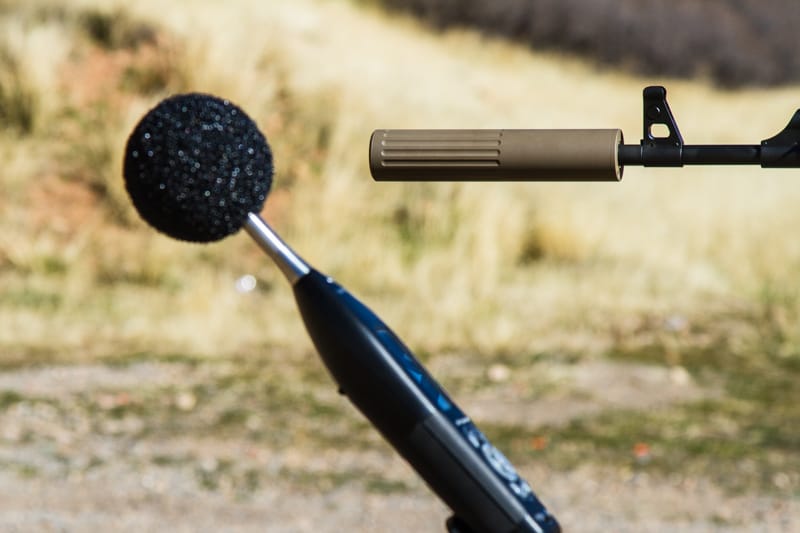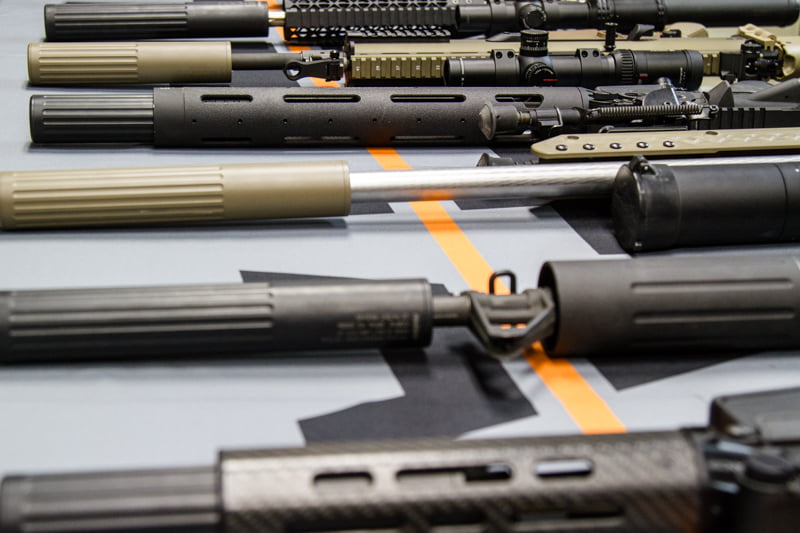Without getting too far into the weeds on a very complicated subject, we’ll try to talk briefly about dB ratings. Suppressors are rated by their decibel reduction (intensity), which is different than perceived sound (loudness). While these two factors are related, they are not the same thing, and they are not proportional. When intensity increases by a factor of 10, loudness only doubles.
Measuring sound is much different than measuring something like weight—it’s not as uniform of a metric. Ammunition, barrel length, action, temperature, humidity, barometric pressure, altitude, the surface you’re standing on and the objects around you all have an impact on both measured and perceived sound.
To make matters even more confusing, sometimes a suppressor can even sound louder or quieter than what the numbers say. We’ve had people at demos tell us that one suppressor sounds quieter than another, even though it rates several decibels higher. The reason for this is that our ears perceive sound very differently than a microphone. In addition to that, there are plenty of ways numbers can be skewed during testing and still be within the Mil standard.
However, even though we know that the numbers don’t really mean what we think they mean, what information can we get from them? We’ve seen plenty of comparisons to other noises like “as loud as breaking glass” or something else similarly arbitrary. Instead, think of it this way. Electronic, over-the-ears style muffs offer approximately 20dB of sound suppression. Good in-the-ear plugs offer approximately 30dB of suppression. What this means (in a very general way, because decibels aren’t exactly what we hear) is that a -20dB suppressor will sound about as loud as shooting an unsuppressed rifle with good electronic ears on, and a -30dB suppressor will sounds about like shooting that same rifle with ear plugs.
Now we come to the real problem. While we can make generalizations about the dB numbers provided for suppressors, we know that they don’t really mean what most people think they do. So what can you trust? Trust your own ears. Shoot the suppressor you plan to buy, do it next to other suppressors you are considering, and then use the quality of sound as one of the many determining factors when choosing your next can.
Other things need to be taken into account as well. If only noise mattered, all suppressors would be three feet long and nine inches in diameter and be extremely quiet. However, a suppressor has to hang off the end of the rifle that you must carry, so compromises must be made. All things being equal, longer suppressors tend to be quieter, but they have their drawbacks. If you get a 10” SBR and purchase an 8” suppressor for it, you’re right back to an 18” rifle. Sure, it’s quiet, but you just lost all of the maneuverability you gained by paying Uncle Sam $200 for the right to cut down your barrel.
On the other hand, as you make suppressors shorter, they’re naturally going to loose some performance. Over-barrel suppressors help minimalize this problem by increasing volume without adding length, but even with these designs there are limits. It’s all a balancing act. You have to decide where to draw the line between suppression, length, weight, balance, blowback, accuracy, durability, and so on. And in the end it’s a personal choice. Don’t just buy the suppressor your hero runs—unless, of course, it happens to be the same one that’s right for you.






